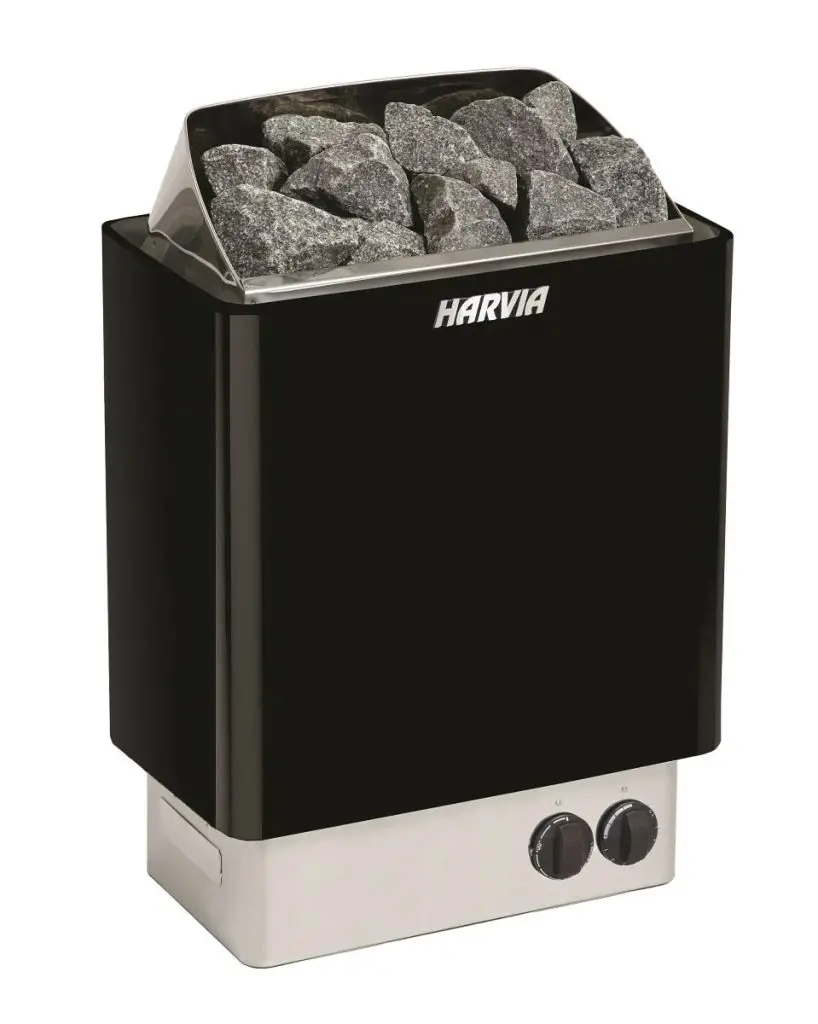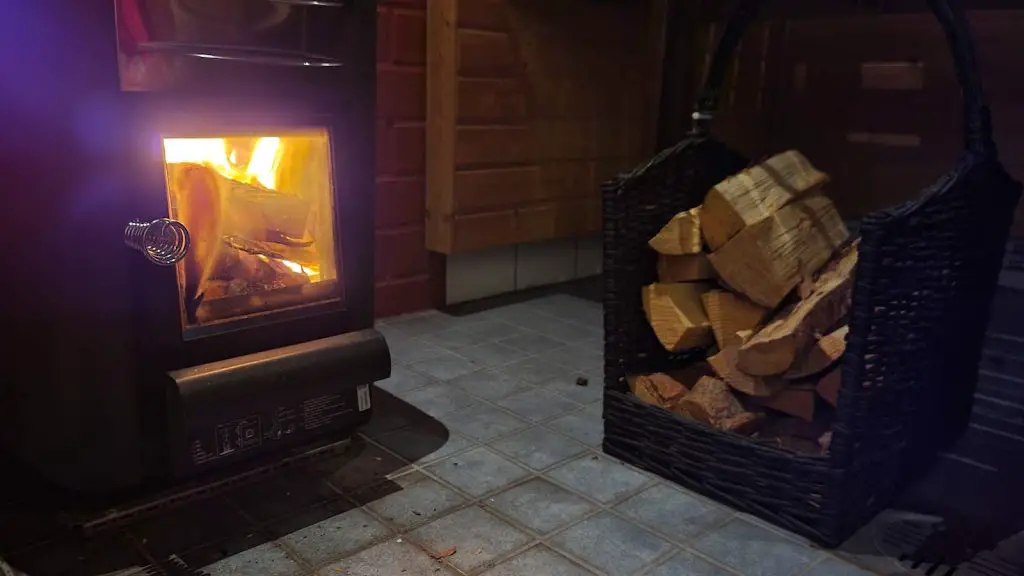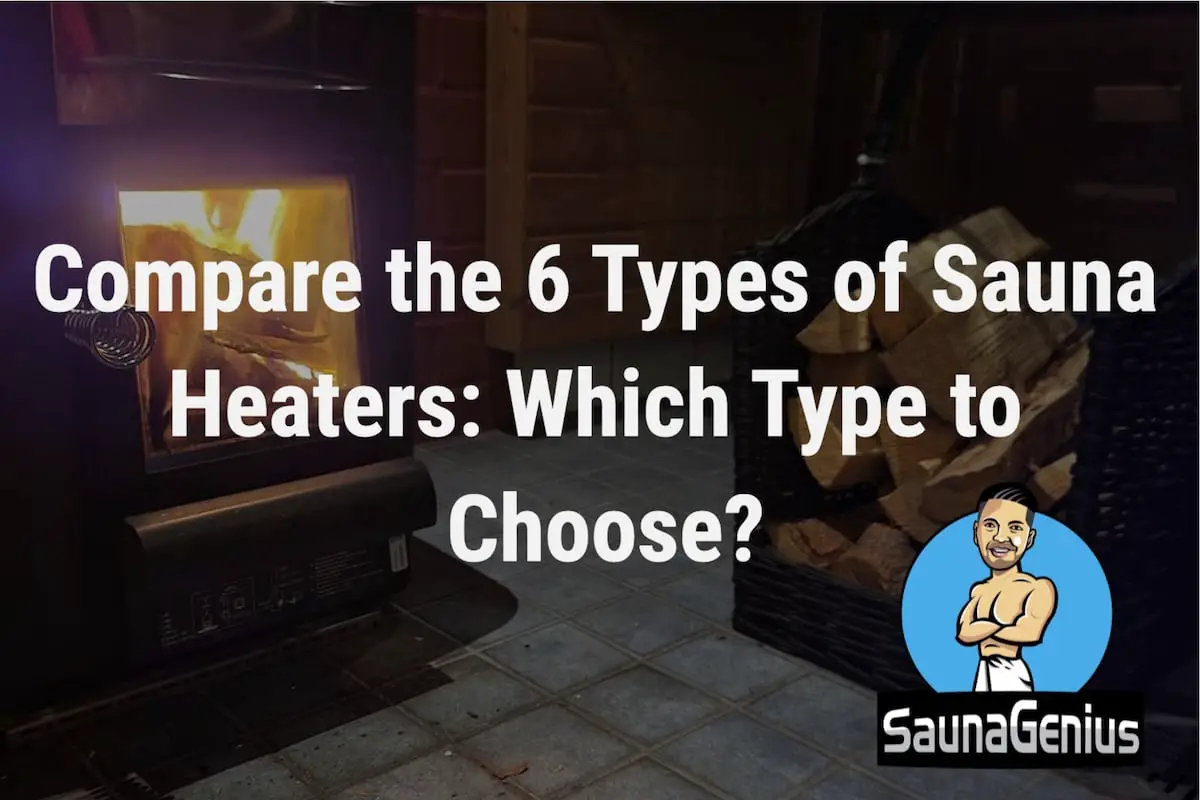There are six types of sauna heaters: electric, wood-burning, infrared, steam, gas, and smoke saunas. Out of these six sauna heater types, electric, wood-burning, infrared, and gas are typically found in home saunas, while steam and smoke saunas are usually only found in spas or in special sauna facilities.
With six different types of sauna heaters available, it can be overwhelming to know which one is best suited for you. In this article, we’ll explore the different types of sauna heaters and their unique features.
By the end of this article, you’ll have a better understanding of each type of sauna heater, its benefits and drawbacks, and which one is best suited for your needs. So, let’s dive into the world of sauna heaters and find the perfect one for you!
Overview of the Different Types of Sauna Heaters
Here’s an overview of all six different types of sauna heaters.
-> Scroll the table to see all data
| Electric | Wood-Burning | Infrared | Gas | Steam | Smoke | |
|---|---|---|---|---|---|---|
| How it works | Electric heating element | Burning wood heats the rocks | Infrared light heats your body | Burning gas heats the rocks | Steam generator creates hot steam | Burning wood heats the stones and creates smoke |
| Cost (Heater only) | $200-$800 | $250-$800 | $200-$800 | $150-$800 | $500-$4000 | $1000-$3000 |
| Preheat time | 15-30 min | 30-45 min | 10-20 min | 15-30 min | 30-45 min | 6-7 hours |
| Easy-of-use | Very easy | Moderate | Very easy | Easy | Moderate | Very difficult |
| Best for | Home saunas | Home saunas, outdoor saunas | Home saunas | Outdoor saunas | Spas, gyms | Specialized sauna spas only |
The Sauna Heater Is the Heart of the Sauna
The type of sauna heater you choose determines the whole feel of your sauna experience.
Different types of sauna heaters will generate different levels of heat, humidity, and even sounds. Some heaters also cost more to buy and operate, and some sauna heating methods require longer preheating time.
That’s why it’s important to choose the right type of heater for you.
For example, choosing a wood-fired sauna heater means a bit more work with chopping wood and setting the fire, you will be rewarded with an authentic traditional sauna experience. A wood-burning sauna may bring some challenges because some building codes may not allow installing wood-burning saunas.
An electric sauna, on the other hand, takes almost no effort making it the most convenient option for everyday use.
Electric Sauna Heaters
If you’re looking for a sauna that’s easy to use and maintain, an electric sauna heater might be the perfect fit for you.

Here’s how they work:
How Electric Sauna Heaters Work
Electric sauna heaters use electricity to heat up the sauna rocks, which in turn emit heat into the air.
They’re easy to use – all you have to do is plug it in, set the temperature, and wait for it to heat up. Electric sauna heaters also come with a variety of options, such as timers and temperature controls, which make it easy to customize your sauna experience.
Pros and Cons
One of the main benefits of electric sauna heaters is that they’re low maintenance. Unlike wood-burning heaters, there’s no need to chop or stack wood, and they don’t produce ash or smoke. They’re also more efficient than other types of heaters, meaning they use less energy to produce the same amount of heat.
However, electric sauna heaters may not provide the same authentic sauna experience as other types of heaters, and they can be more expensive to operate in the long run. See a breakdown of how much saunas cost to operate.
Best Suited for Convenience and Ease-of-Use
Electric sauna heaters are best suited for those who prioritize convenience and ease of use. They’re a great choice for smaller saunas or for those who want to quickly heat up their sauna without having to chop wood or start a fire.
They’re also ideal for use in apartments or homes where it may not be possible to install a traditional wood-burning sauna.
Wood-burning Sauna Heaters
If you’re looking for an authentic and traditional sauna experience, a wood-burning sauna heater might be the way to go.

Here’s everything you need to know about them:
How Wood-Burning Heaters Work
Wood-burning sauna heaters work by burning wood to heat up the rocks inside the sauna. The heat from the rocks is then released into the air, creating a warm and cozy sauna experience.
Wood-burning heaters require a bit more effort to use than electric heaters, as you’ll need to chop and stack wood and start a fire. I made a guide for heating a sauna with a video if you want to see what it takes to heat a wood-burning sauna.
However, for many people, the effort is worth it for the authentic sauna experience.
Pros and Cons
One of the main benefits of wood-burning sauna heaters is that they provide an authentic and rustic sauna experience. There’s nothing quite like the smell of burning wood and the sound of crackling flames to make you feel like you’re truly in a traditional sauna.
They’re also generally more affordable to purchase than electric heaters, and they don’t require any electricity to operate.
However, wood-burning heaters do require more maintenance than other types of heaters, and they produce ash and smoke, which can be a nuisance to clean up.
Best Suited for an Authentic Experience
Wood-burning sauna heaters are best suited for those who want an authentic and traditional sauna experience. They’re great for those who enjoy the process of chopping and stacking wood, and the cozy warmth that comes with a wood-burning fire.
They’re also ideal for those who live in areas with a readily available source of firewood. However, they may not be the best choice for those who prioritize convenience and low maintenance.
Infrared Sauna Heaters
If you’re looking for a sauna that’s easy to use and doesn’t require as much time to heat up, an infrared sauna heater may be the perfect choice for you. Here’s what you need to know about them:
How Infrared Sauna Heaters Work
Infrared sauna heaters use infrared technology to heat up the body directly, rather than heating up the air inside the sauna.
This means that they don’t require as much time to heat up as other types of heaters, and they use less energy. Infrared heaters are often made up of infrared panels that emit infrared waves, which are absorbed by the body to create a warm and relaxing experience.
Pros and Cons
One of the main benefits of infrared sauna heaters is that they’re energy-efficient and easy to use. They’re also often more affordable than other types of sauna heaters.
However, they may not provide the same authentic sauna experience as other types of heaters, and they can be less effective at providing the full-body benefits of traditional saunas.
Best Suited for Convenience and Limited Space
Infrared sauna heaters are best suited for those who prioritize convenience and energy efficiency. They’re a great choice for those who don’t have the time or energy to chop wood or start a fire, and they’re often more affordable to operate in the long run. They can be also installed in smaller homes and limited space.
They’re also ideal for those who want to experience the benefits of a sauna without having to endure the high heat of traditional saunas. However, they may not be the best choice for those who want an authentic sauna experience.
Gas Sauna Heaters
If you’re looking for a sauna heater that’s easy to use and doesn’t require as much maintenance as other types, a gas sauna heater might be a great option for you. Here’s what you need to know:
How Gas Sauna Heaters Work
Gas sauna heaters work by burning natural gas or propane to heat up the rocks inside the sauna. The heat from the rocks is then released into the air, creating a warm and cozy sauna experience.
Gas heaters are generally easy to use, and they heat up quickly.
Pros and Cons
One of the main benefits of gas sauna heaters is that they’re easy to use and require very little maintenance. They also produce very little smoke or ash, making them a great option for those who don’t want to deal with the cleanup of a wood-burning heater.
However, they do require a gas line to operate, which can be costly to install if you don’t already have one. Otherwise, you can also use a gas cylinder which should be enough for a few sauna sessions.
They’re also not as energy-efficient as electric or infrared heaters, and they may not provide the same authentic sauna experience as a wood-burning heater.
Best Suited for Outdoor Saunas and Convenience
Gas sauna heaters are best suited for those who want a low-maintenance option that’s easy to use. They’re a great choice for those who already have a gas line installed, as they’re often more affordable to operate than electric heaters.
A gas heater is also a good option for outdoor saunas or more remote locations because you don’t have to run electricity in the sauna. In this case, you can hook up a standard gas cylinder to the gas sauna stove.
They’re also ideal for those who want a sauna that’s quick to heat up, and who don’t want to deal with the hassle of a wood-burning heater. However, they may not be the best choice for those who want an authentic and traditional sauna experience.
Steam Sauna Heaters
Steam sauna heaters, also known as wet sauna heaters, are a popular choice in many spas and gyms.
While they’re not as common in residential settings, they can provide a unique and relaxing sauna experience.
Here’s what you need to know:
How Steam Sauna Heaters Work
Steam sauna heaters work by heating up water to create steam, which is then released into the sauna. The steam creates a warm and humid environment that’s great for relaxing and rejuvenating the body.
Steam sauna heaters are powered by electricity.
Pros and Cons
One of the main benefits of steam sauna heaters is that they provide a very relaxing and rejuvenating sauna experience.
The warm and humid environment can help to open up pores, clear sinuses, and soothe sore muscles.
However, steam saunas can be more expensive to operate than other types of sauna heaters, as they require a lot of water to create steam. They can also be more difficult to clean and maintain, as the steam can cause mold and mildew to grow if the sauna isn’t properly ventilated.
Best Suited for Spas and Gyms
Steam sauna heaters are not a good choice for home saunas as they can be expensive to operate and maintain. Additionally, steam saunas require a lot of space and ventilation, which can be difficult to achieve in a residential setting.
If you want to use a steam sauna, it’s best to find a gym with a steam room near you or go to your local spa for a sauna day.
Smoke Sauna Heaters
Smoke sauna heaters are a unique type of sauna heater that are very rare outside of Finland.
They’re often found only in special sauna spas and are a traditional part of Finnish sauna culture.
Here’s what you need to know:
How Smoke Sauna Heaters Work
Unlike other types of sauna heaters, smoke sauna heaters don’t have a chimney. Instead, the smoke from the stove fills the sauna, giving it a unique and rustic atmosphere and a wonderful smoke smell.
However, this means the room is filled with smoke which – as you can understand – has a risk of carbon monoxide poisoning. This is why heating a smoke sauna requires special knowledge, and you need to let the smoke clear from the sauna before it’s ready to be used.
Warning
Here’s a great video guide about heating a Finnish smoke sauna:
Pros and Cons
One of the main benefits of smoke sauna heaters is their unique and authentic sauna experience. The smoke-scented sauna provides a very different atmosphere than other types of saunas and can be very relaxing and rejuvenating.
However, smoke saunas can be difficult to maintain, as the smoke can cause soot and ash to build up on the walls and ceiling. They can also be more difficult to clean.
Best Suited for Pros and Special Sauna Spas Only
You have to be a real sauna-enthusiast to build a smoke sauna on your property.
Even in Finland, having a personal smoke sauna at your house is almost unheard of. Typically smoke saunas can be only found at specialized spas or they run as independent businesses where you can rent the smoke sauna for a day for a bigger group.
Conclusion: Review of the 6 Sauna Heater Types
There you have it, the six types of sauna heaters: electric, wood-burning, infrared, steam, gas, and smoke saunas. Each type of heater has its own unique set of pros and cons and is best suited for different needs and preferences.
When choosing a sauna heater, there are a few factors to consider.
- Firstly, think about the size of your sauna, as this will affect the size and power of the heater you need.
- You’ll also want to consider the cost and energy efficiency of each type of heater
- Also, consider how easy it is to maintain and use.
In summary, electric sauna heaters are easy to use and maintain, wood-burning heaters provide an authentic and rustic experience, infrared heaters offer a low-heat option, steam heaters are great for spas and gyms, gas heaters are a good choice for outdoor saunas, and smoke sauna heaters provide a unique and traditional experience.
When it comes down to selecting the best sauna heater for your needs, it ultimately depends on your personal preferences and requirements. Consider your budget, your space, and the type of sauna experience you’re looking for. With a little research and some careful consideration, you’re sure to find the perfect sauna heater for you.
So what are you waiting for? Get ready to sweat it out in the sauna of your dreams!

